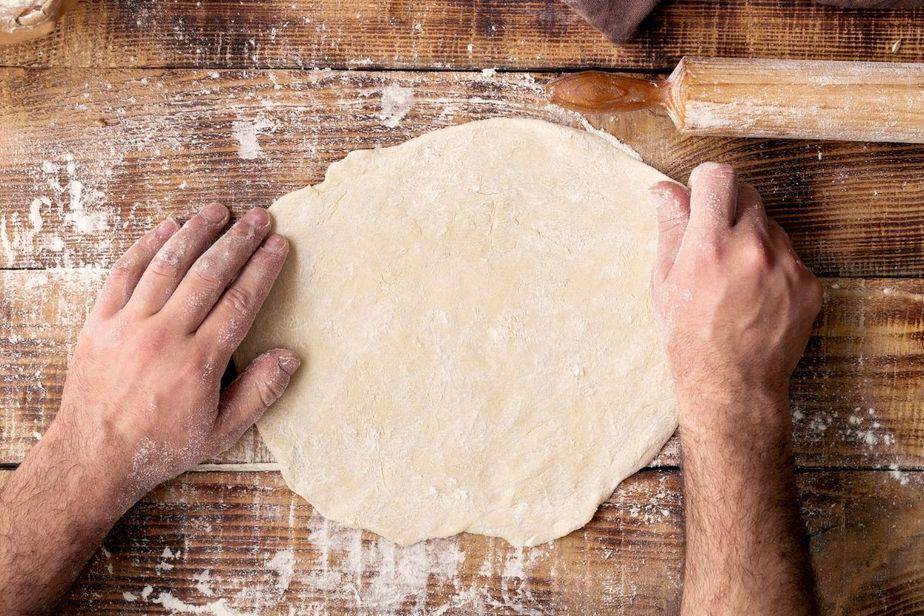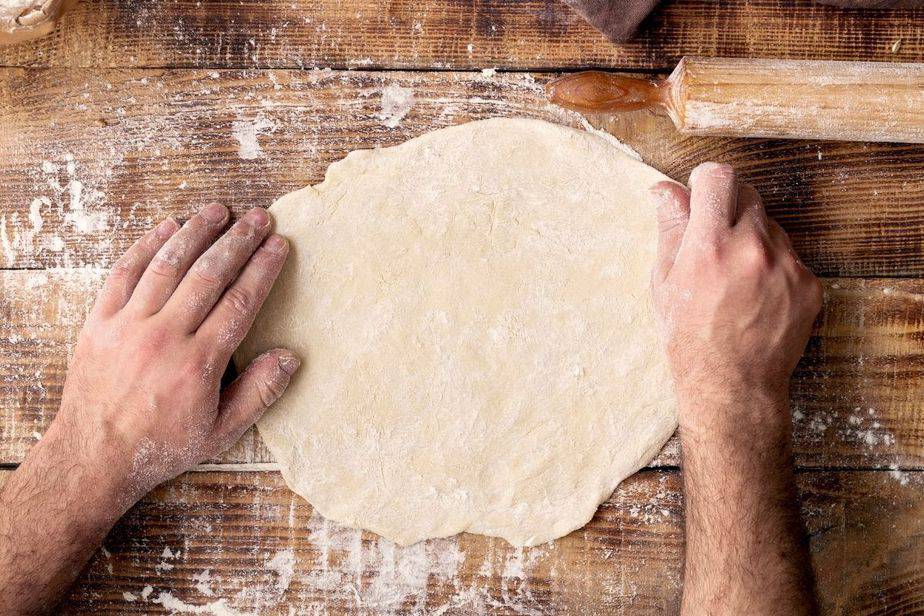
If you’re into making homemade pizza then there are some things that can become a bit of a problem. One of the most common issues experienced by home pizza chefs is that their dough just won’t stretch out, no matter how hard they try. This can be incredibly frustrating when all you want is to tuck into your tasty pizza.
However, quite often, there is a simple fix to this problem and in this post, we are going to be giving you some top tips on what to do if your dough keeps shrinking back as you try to roll it out.
So, let’s get started!
What Causes Pizza Dough To Shrink?
Getting your dough rolled out is one of the most important parts of creating a thin crust pizza but you aren’t alone as a pizza lover. Pastry dough, bread dough, pie dough and various other types of doughs can all experience similar problems.
Where pizza dough is concerned, you should be considering the gluten network of the dough. To get a nice texture for your crust, you don’t want the gluten strands to be too tightly connected. In short, if the gluten network is too strong, your pizza won’t be easily rolled out to form a nice crust.
What’s The Deal With Gluten?
When you look at pizza recipes online, you will notice that one thing every recipe has in common is that it asks you to knead your dough and let it rise. This is all part of the process that gluten has to go through before the dough can be formed into a pizza base and crust.
Your pizza bread flour contains gluten in a dry form and when this is mixed with water, the gluten begins to stretch and become elastic. Kneading the dough helps this process and gives you a pizza dough that will easily form into a nice base.
On top of this, for a fluffier crust, you will need your pizza dough to rise. A key ingredient of any dough recipe is yeast. Yeast feeds on the gluten, altering its structure during the proofing process. Your pizza dough will rise and double in size. The point of this is that you will end up with a fluffier, thicker and more tasty crust.
How Do I Stop My Pizza Dough Shrinking?
Whether you are making apple pie, bread, pizza or anything else, many home chefs experiences problems when it comes to stretching their dough into the right shape. As we have discussed, the issue with pizza dough often lies in the gluten structure being too closely knit. But we have some great tips to improve its elasticity and help you to get something much easier to roll. Take a look at the steps below.
Follow The Recipe Closely
All pizza dough recipes contain similar ingredients; flour, yeast, water, salt, oil and sugar. There are many great ways to improve the stretch of your dough but you should start from the beginning and the first step is always to make sure that you use the correct amount for each ingredient.
Flour is a considerable issue here because a lot of the recipes you see online will tell you to add so many cups of flour. This is all well and good but depending on who is measuring the cup of flour, it may be more compressed than when someone else measures it.
For this reason, it is essential that you weight your flour and other ingredients in order that you get the mixture exactly as it should be from the get-go. Follow each step of your recipe and use weighing scales to get just the right measurements.
Consider The Protein In Your Flour
A lot of people think that you can use any old flour to make dough for a pizza pie crust but in truth, the type you use does make a difference. Most notably, you should consider the protein content of the flour.
There are different types of wheat flour, some contain more protein but these are typically bread flours and owing to the higher level of protein, they tend to have more gluten. Less gluten content flours work much better for pastries and lighter baked goods.
If you are looking for a deep pan, chewy crust pizza then using a lower protein flour is 1 of the first things you should think about. The protein should only be around 12%. Once you create your dough ball and let it rest, you will notice that it proofs much more nicely.
Increase The Proofing Time
It can be tempting to return to your batch of pizza dough and try to stretch it before it is ready. The whole point of the proofing process is that you give the dough time to rise; this is a very important step and should never be rushed.
During this time, the gluten will relax and this will make the dough much more stretchy. If this doesn’t happen for long enough, you will find that the pizza dough simply won’t stretch how you want it to.
If you are going to follow any of these tips, this should be at the top of your priority list. You will often see recipes online that give you advice on how to rush the proofing process and while you will end up with a half decent pizza dough at the end of it, you will also find that the crust is not quite what you expected; the texture and flavour will not be anywhere near as good as if you allowed your dough to proof for the full time.
As a rule of thumb, if you are proofing the dough at room temperature, you should allow it to proof for at least 90 minutes but for the best results you can keep it at room temperature for a few hours in a process known as slow proofing.
Any longer than this and your dough will need to be proofed in the fridge. You should place the dough into a mixing bowl, cover it over and pop it in the fridge for 24 hours.
Don’t Try To Stretch Cold Dough
Of all the ideas people have about how to make good pizza dough, stretching out cold dough is not a great idea.
When the dough is cold, it will snap back much more easily that when it is warm. You don’t need massive amounts of heat but if you take the dough out of the fridge, you will need to let the dough rest at room temperature first.
How long you do this will depend on the temperature of the air. If it is pretty warm and humid, you will need less time than if it is cool.
How To Stretch Your Dough
In order to get the best pizza pie crust, you will need to stretch the dough by hand. Many bakers will tell you to use a rolling pin, but typically, doing the stretching by hand will deliver better results. A pin will remove a much of the air inside the dough and this will result in a denser and less textured pizza pie crust. What’s more, it’s much more fun and a great way to get the kids involved in the cooking process.
Furthermore, when you do it by hand, you are able to hold the dough in position for a few seconds to give it chance to adhere to its new shape.
To get the best shape, put the dough onto your work surface. You should make an indent of about an inch around the edge of the dough; this will form the pie crust. Next, you just need to flatten the inner portion using your fingers.
The next step is to use the flat of your hand in an upwards motion to pull the dough and move it until you reach the desired size. Once it is at the right size, pop the dough over your knuckles and allow it to fall so that any thicker parts will even out.
Now put your base onto some parchment paper or a pie plate or pan lightly coated in fat or oil, cover it in toppings and pop it into the oven until it is cooked.
Conclusion
There is nothing quite like a hot homemade pizza, but getting from your raw ingredients to the finished product does take some hard work. The main issue for many home bakers is that their dough won’t stretch and keeps shrinking. This is typically because the gluten network is too tight.
There are several ways to rectify this issue and we have looked at some great tips to get you on your way to creating a wonderful pizza dough that will always deliver a delicious finished product! Bon appetit!
